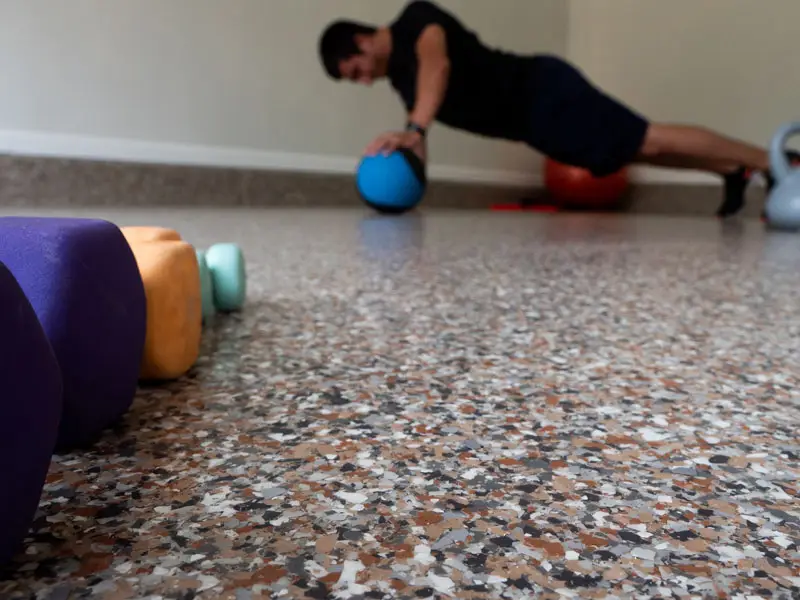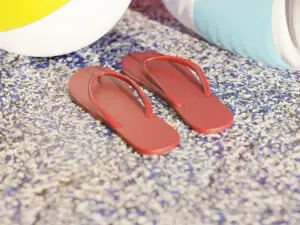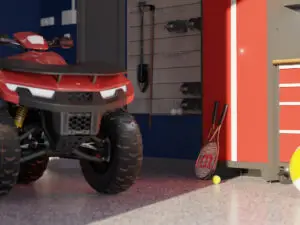Polyaspartic vs. Epoxy Flooring: A Comprehensive Comparison
When it comes to choosing the perfect flooring solution for your garage, basement, or commercial space, polyaspartic and epoxy coatings are two of the most popular options. Both offer durability and protection, but they differ in terms of application, performance, and cost. In this blog post, we’ll explore the key differences between polyaspartic and epoxy flooring to help you make an informed decision.
What is Epoxy Flooring?
Epoxy flooring is a popular choice for residential, commercial, and industrial applications due to its durability and versatility. It is created by mixing resin with a hardener, resulting in a rigid, plastic-like coating that adheres well to concrete surfaces. Epoxy coatings come in various colors and finishes, including metallic and decorative options.
Advantages of Epoxy Flooring:
- Durability: Epoxy floors are known for their high resistance to wear and tear, making them suitable for high-traffic areas.
- Chemical Resistance: They offer excellent resistance to chemicals, making them ideal for industrial environments.
- Aesthetic Options: Epoxy coatings come in a wide range of colors and finishes, allowing for creative designs.
- Affordability: Generally, epoxy is a cost-effective flooring solution compared to other options.
Disadvantages of Epoxy Flooring:
- Curing Time: Epoxy requires a longer curing time, which can delay the use of the space.
- UV Sensitivity: Epoxy is prone to yellowing when exposed to UV light, making it less suitable for outdoor applications.
- Limited Flexibility: Once cured, epoxy can be brittle and may crack under heavy impacts.
What is Polyaspartic Flooring?
Polyaspartic is a type of polyurea coating that has gained popularity for its rapid curing time and excellent durability. It is a newer technology compared to epoxy and offers several advantages, particularly in commercial and industrial settings. Polyaspartic coatings are applied in layers and can be completed in a fraction of the time it takes for epoxy.
Advantages of Polyaspartic Flooring:
- Fast Curing Time: Polyaspartic coatings cure much faster than epoxy, often allowing the space to be used within a day.
- UV Resistance: Unlike epoxy, polyaspartic coatings are UV stable and do not yellow over time, making them suitable for both indoor and outdoor use.
- Durability and Flexibility: Polyaspartic is highly resistant to abrasion, chemicals, and impact, and it remains flexible, reducing the risk of cracking.
- Temperature Tolerance: This coating can be applied in a wider range of temperatures, from cold to hot environments.
Disadvantages of Polyaspartic Flooring:
- Cost: Polyaspartic coatings tend to be more expensive than epoxy.
- Limited Working Time: Due to its fast curing, polyaspartic requires quick application, which can be challenging for DIY projects.
- Fewer Aesthetic Options: While polyaspartic can be tinted and comes in different finishes, it doesn’t offer as many decorative options as epoxy.
Which Flooring Option is Right for You?
The choice between polyaspartic and epoxy flooring largely depends on your specific needs and circumstances. If you require a quick installation with minimal downtime and need UV resistance, polyaspartic may be the better choice. However, if cost is a significant factor and you’re looking for a wide variety of aesthetic options, epoxy might be the way to go.
Conclusion
Both polyaspartic and epoxy flooring offer excellent durability and protection for your surfaces. While epoxy remains a tried-and-true option, polyaspartic provides a modern alternative with unique benefits like rapid curing and UV resistance. Assess your specific requirements, budget, and desired aesthetics to determine which flooring solution best suits your space. Whichever you choose, you’ll be investing in a durable, long-lasting flooring system that enhances the look and functionality of your area. Feel free to reach out to our team for more information or to schedule a consultation for your flooring project. We’re here to help you make the best choice for your needs!


